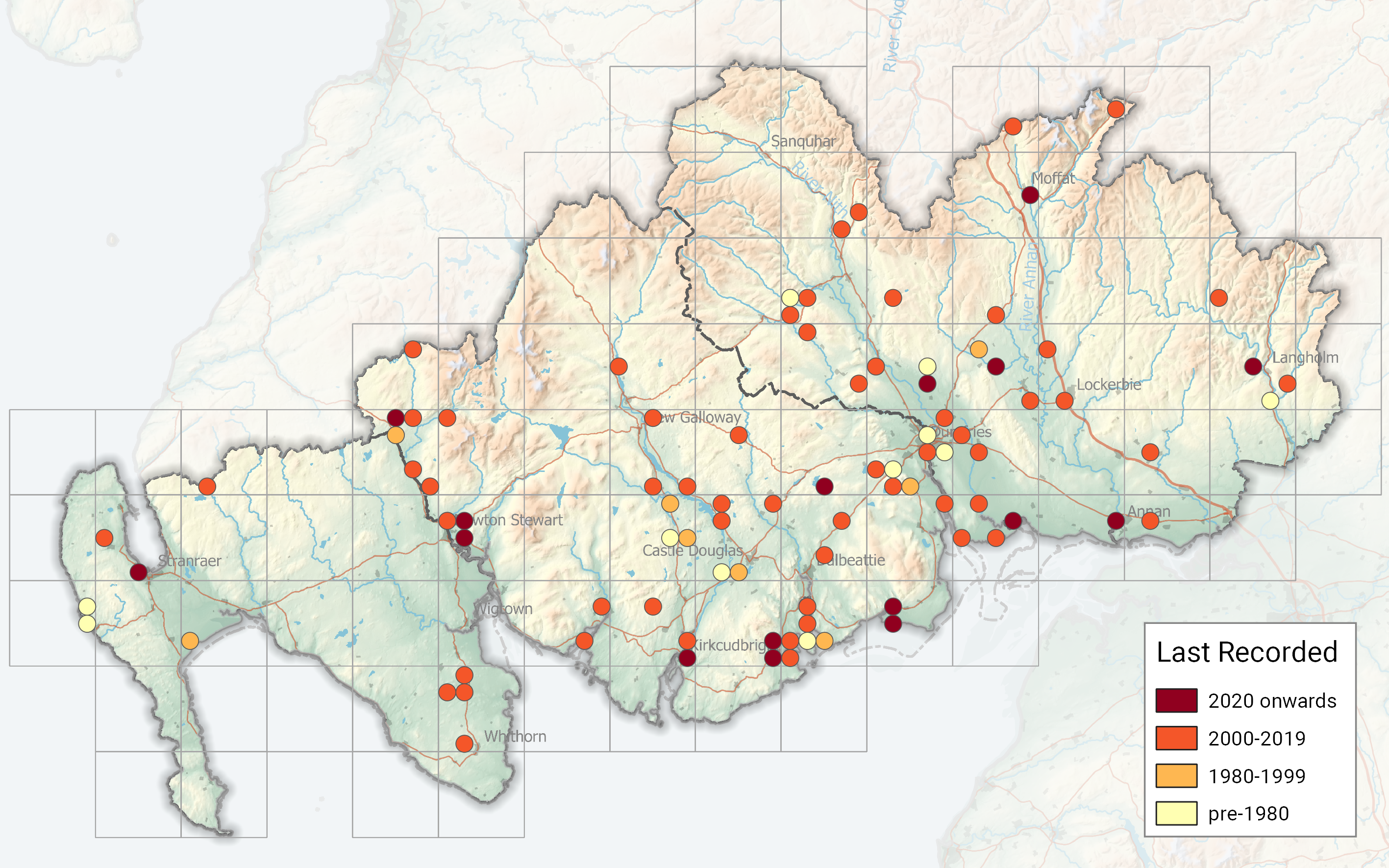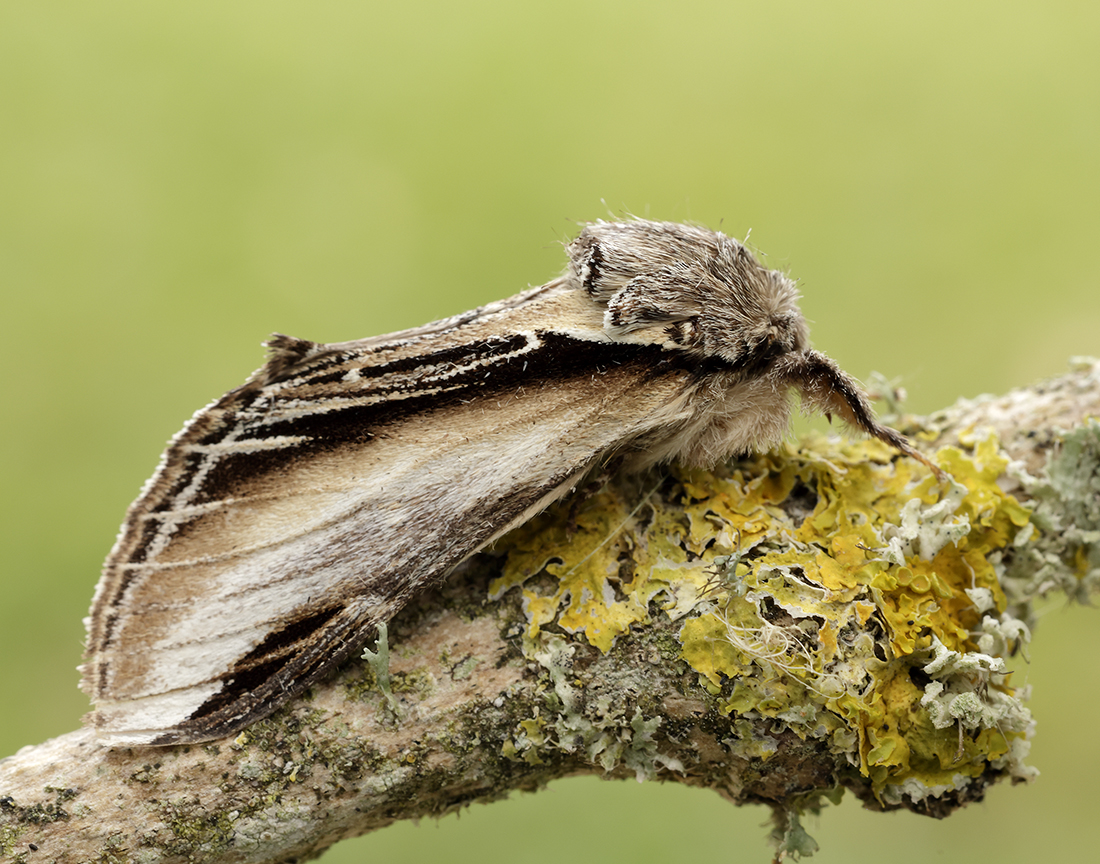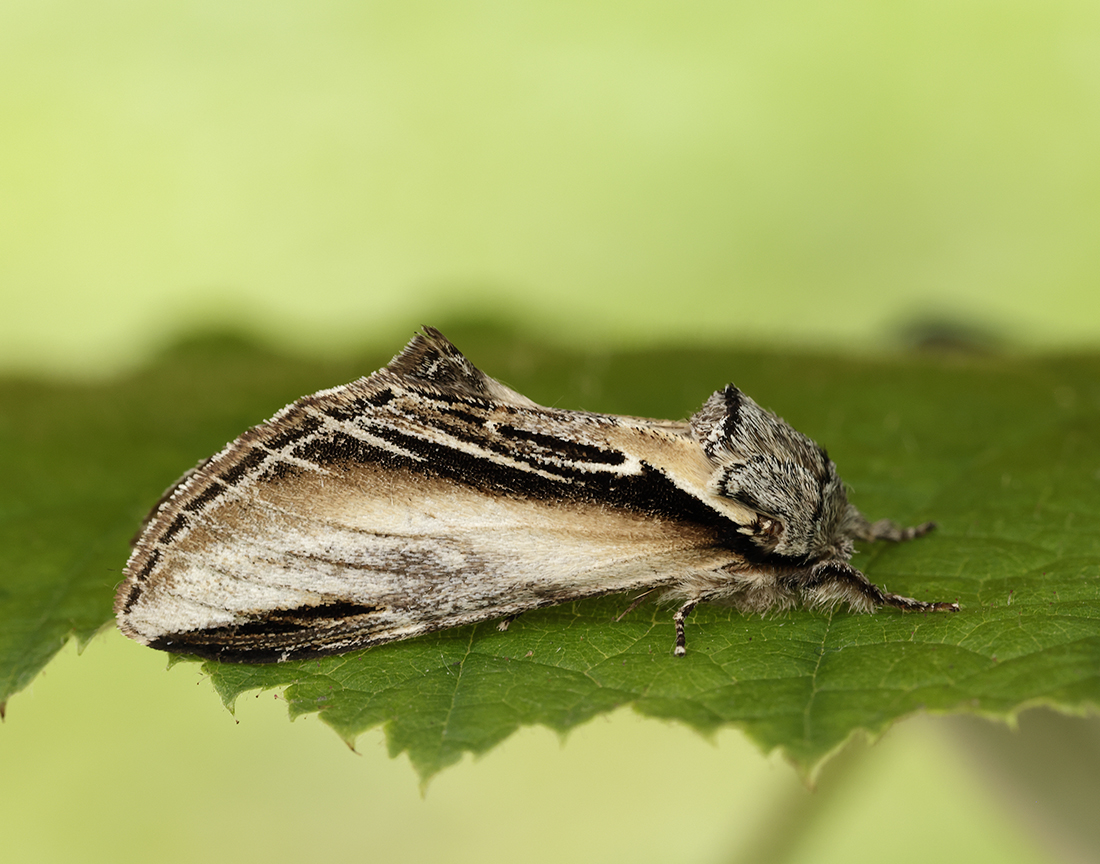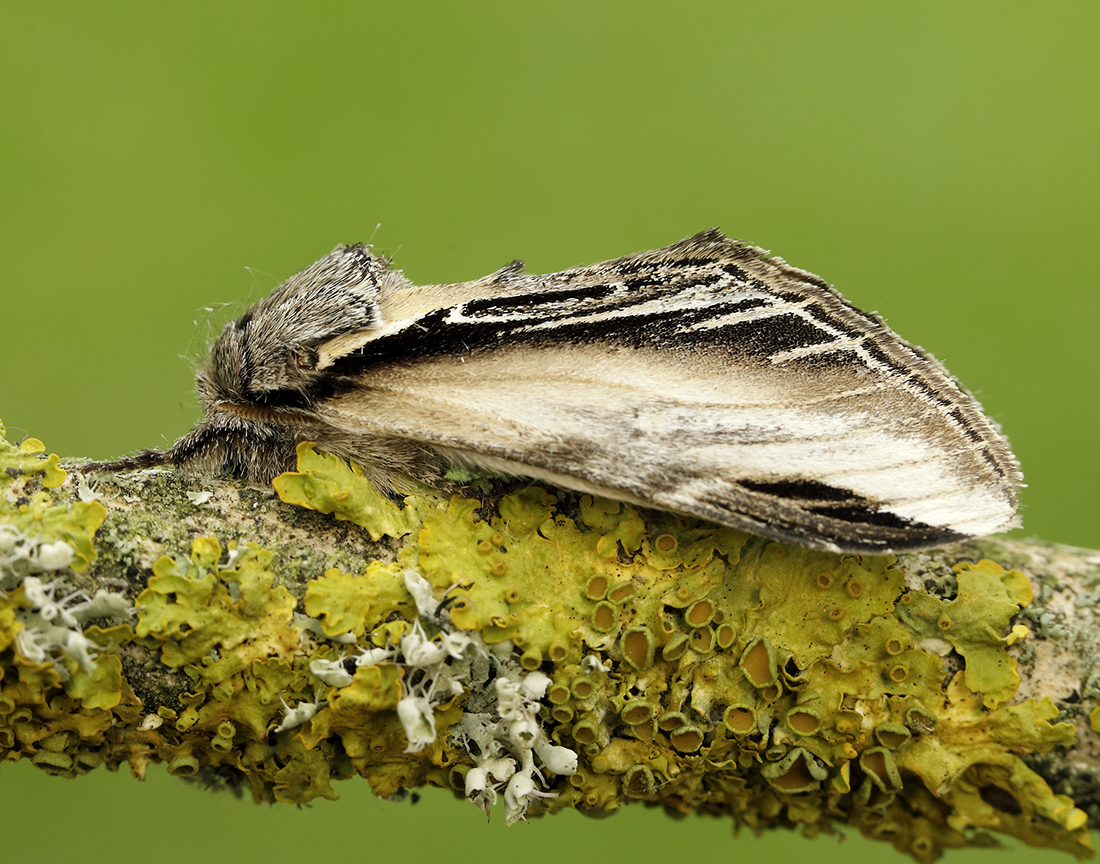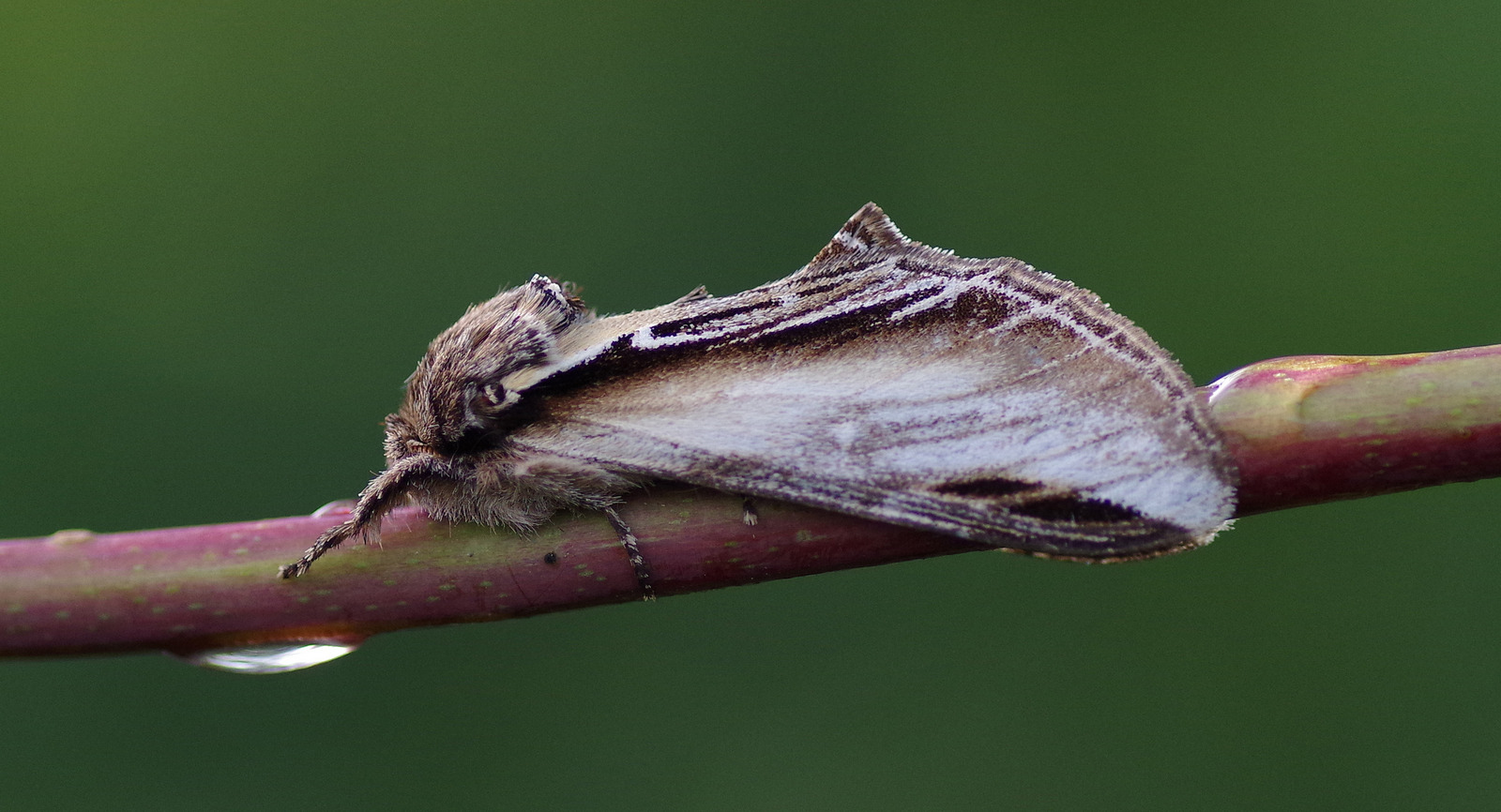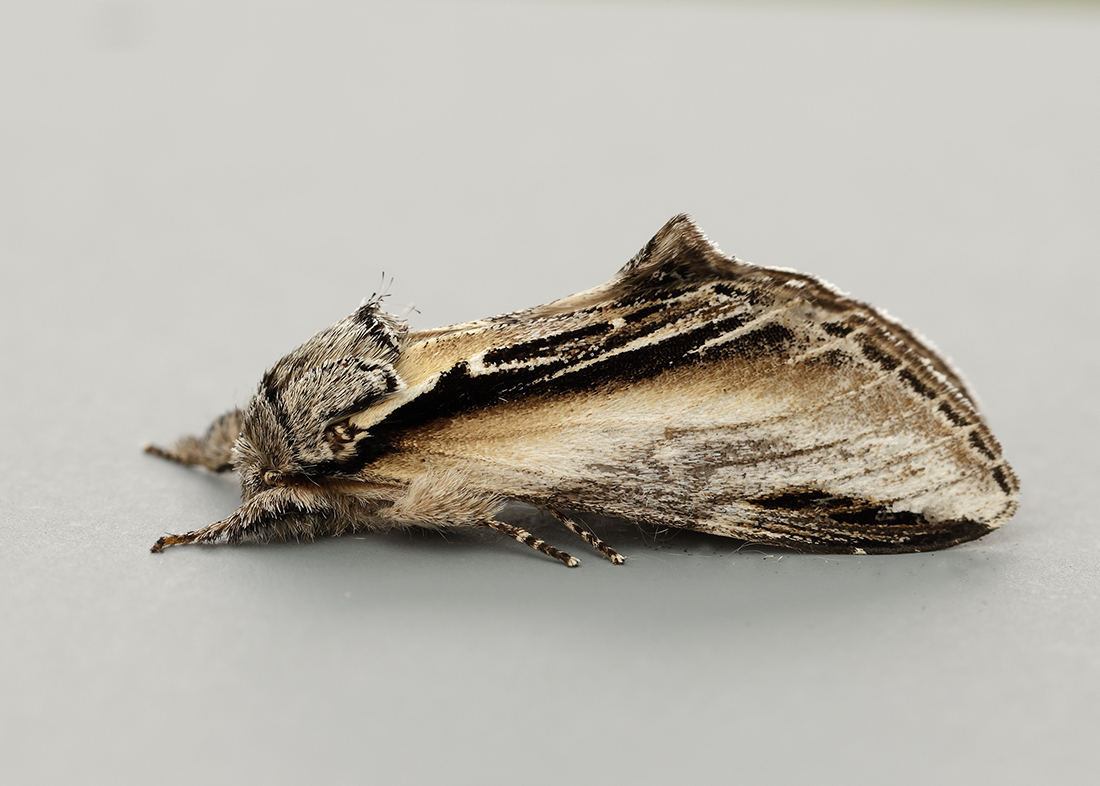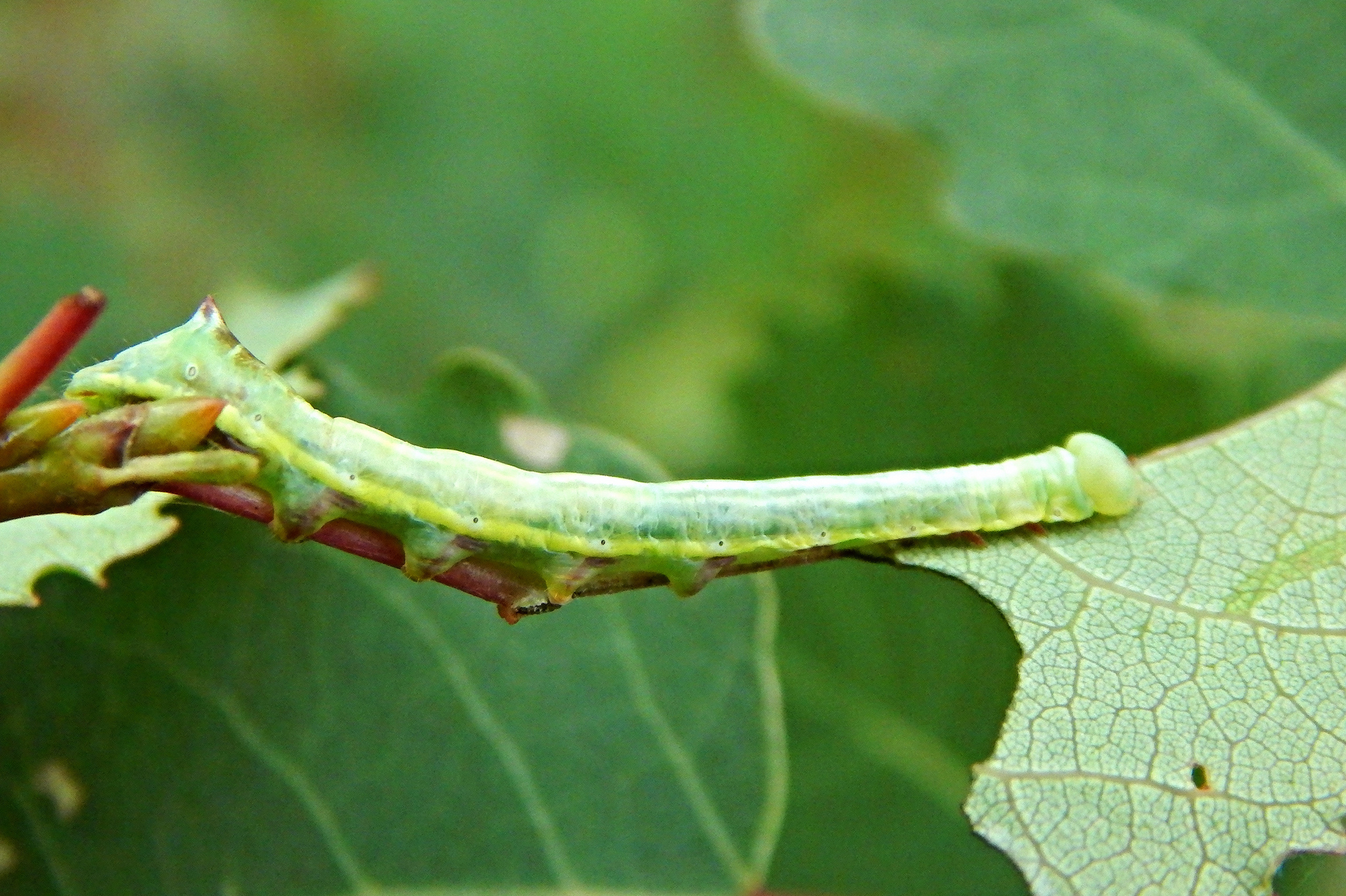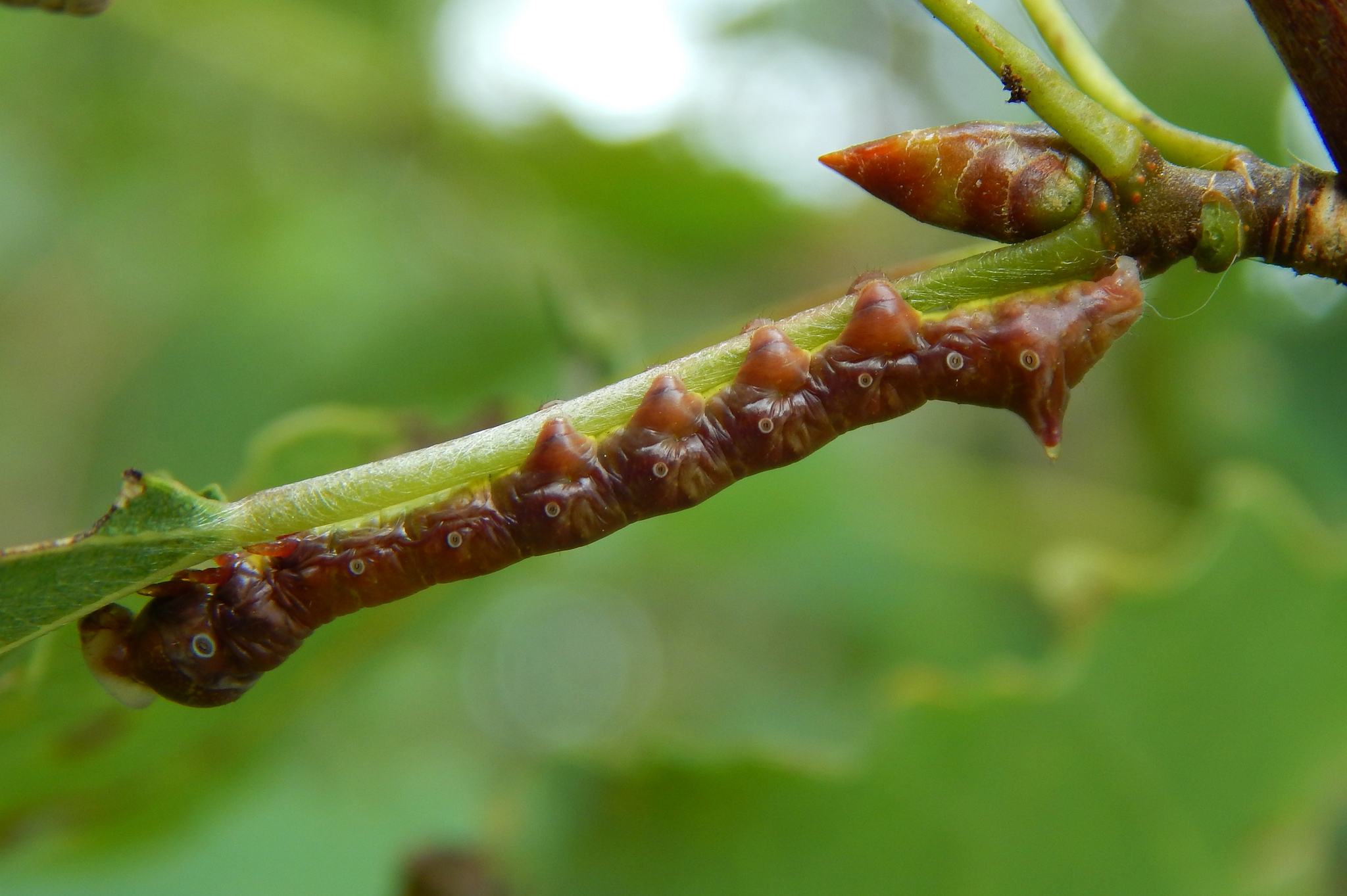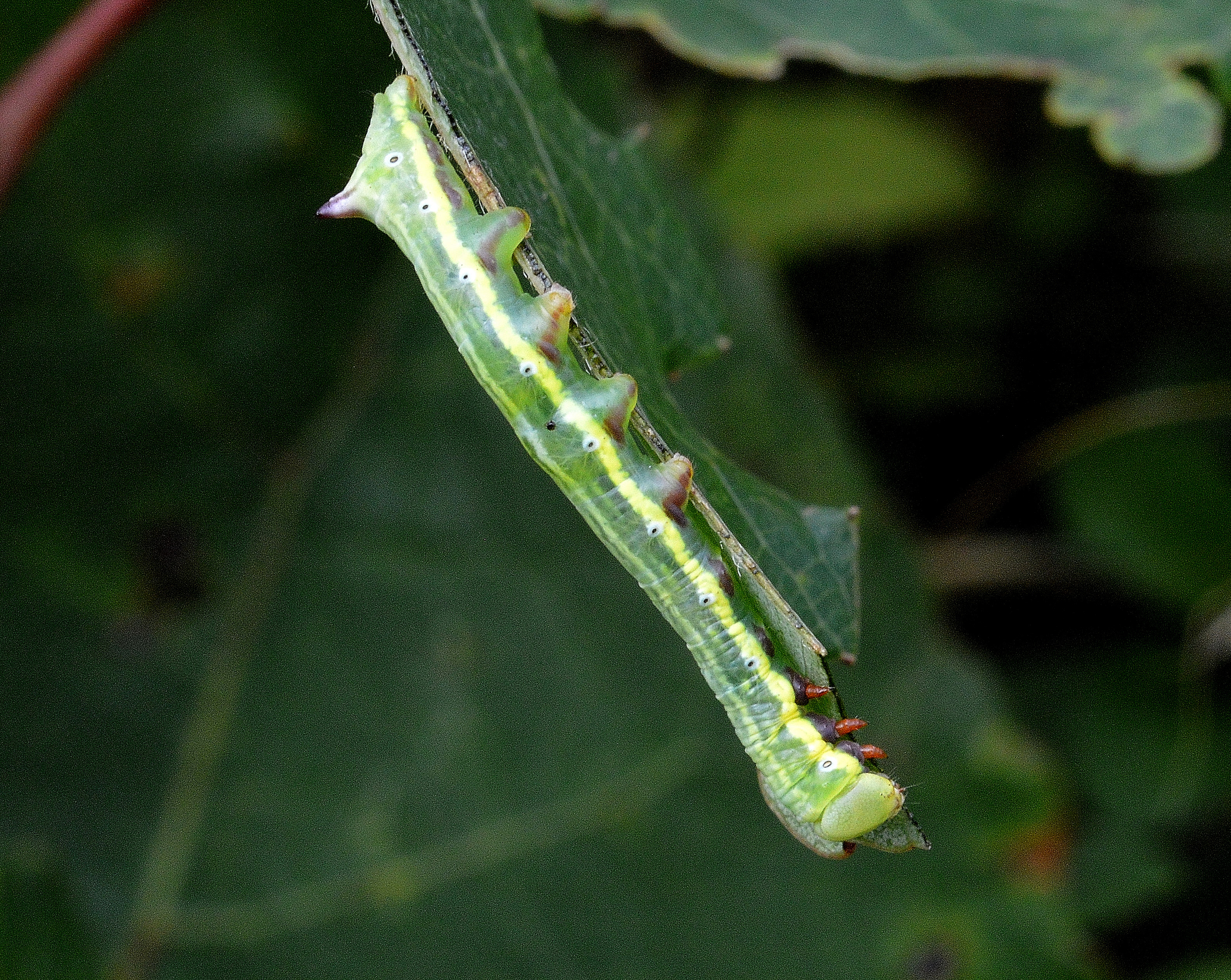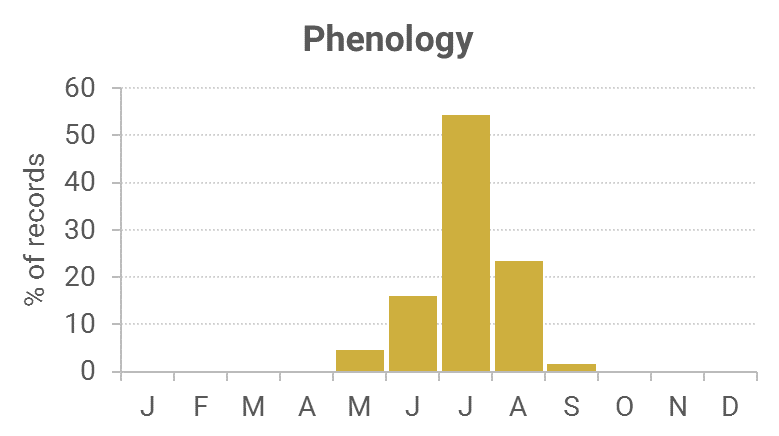Identification
Care required to separate from similar Lesser Swallow Prominent. To separate from that species the greyish-white wedge from the apex should reach at least halfway to the base along the trailing edge.
Life cycle
One generation. Overwinters as a pupa underground. Larvae are present from July to September.
Larval foodplants
Willows, sallows, Aspen and other poplars.
Habitat
Gardens, woodland and shelter-belts.
History 1860-2010
Stainton (1859) mentioned Edinburgh as the only Scottish locality for this moth. Later, Lennon (1860) had stated he had found it twice around Dumfries whilst out rambling, and by (1863) stated it was not common, but that he had found it at Dalskairth (VC73). During 1864 he collected twenty larvae at the Crichton Institution. Douglas Robinson (1871) had found one larva on aspen during August, 1870, on Almorness. Gordon (1913) occasionally found the larvae on poplars around Corsemalzie, Wigtownshire. Hugh McDowall informed him that he had captured an imago near Portpatrick in 1886.
D. A. Mowat, keeper at Killantringan Lighthouse (VC74), sent three specimens that had been caught at the light during 1913-15, to William Evans to aid his research into moth migration at Scottish lighthouses.
Sir Arthur Duncan (1909-84) during his lifetime had found it at Closeburn, Tynron and Castlehill, Dumfries (all VC72), while David Cunningham had also found it on the Tinwald Downs in 1951.
During 1974-2010 a hundred records were recorded with a quarter of them from Kirkton, the rest from widely scattered sites like Kirkland in the north, Irvine House Lodge at Auchenrivock in th east, Kippford in the south and Forest Moor in the west.

